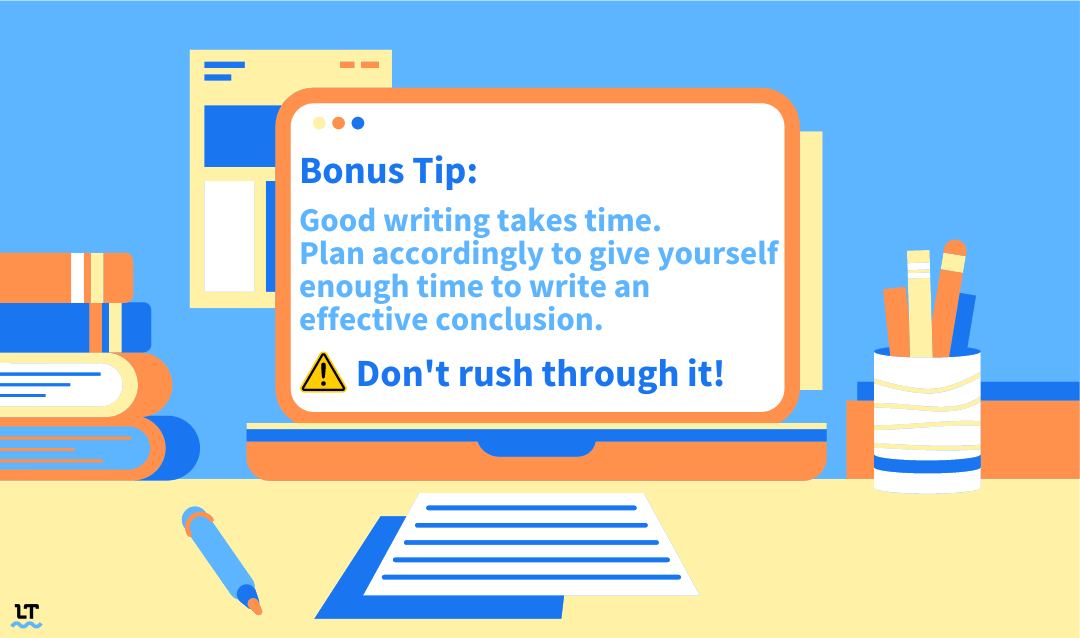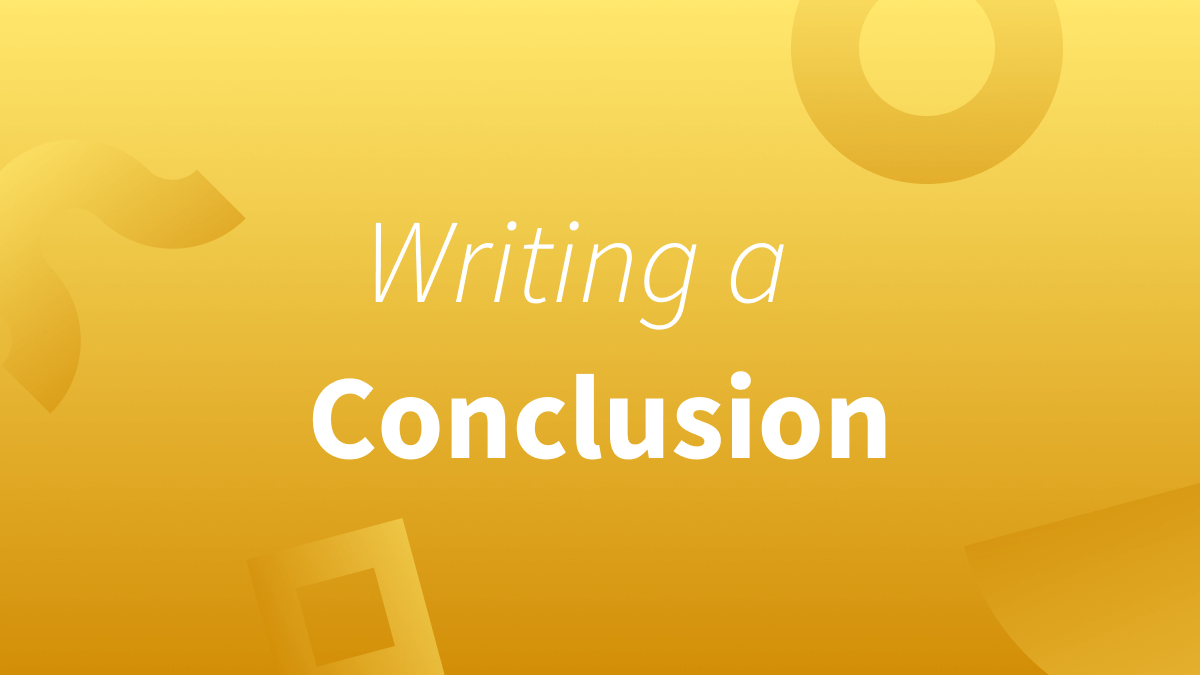How To Write a Strong Conclusion
- Avoid simply restating what you said throughout the text.
- Form a connection between your supporting arguments and the main idea.
- Add valuable insight.
- Circle back to the introduction.
- Remain consistent in tone and style.
- Don’t add new information or opinions.
- Refrain from using overused transition phrases.
What Is a Conclusion?
A conclusion is the last paragraph of an essay, research paper, book report, or any other type of paper. It’s where the writer is supposed to encapsulate the essence of everything that’s been written.
Seeing that it’s the last part the audience reads, it’s what they will remember the most about your writing. That’s why writing a good conclusion is critical.
Don’t let the pressure get to you, though. Writing a conclusion is easy if you keep the following tips in mind.
How To Write a Conclusion
The following tips are helpful regardless of what type of paper you’re writing, but keep in mind that several types of conclusions serve different purposes. Please use this advice to suit your writing.
1. Avoid simply restating what you wrote throughout the text.
“Tell them what you’re going to write. Write it. And then tell them what you wrote.”
This is advice that teachers often give their grade-school students to teach them how to write an essay. Although it’s sound advice, it’s not exactly what you want to do when writing a high-level essay, report, or research paper.
A summary of what was written is okay, but avoid extensively recapping your entire paper, as this will bore your readers.
2. Form a connection between your supporting arguments and the main idea.
The purpose of a conclusion is to bring everything together. Show how the supporting arguments, evidence, or points you presented reinforce the main idea of your writing.
If you’re having trouble forming a connection, use the popular so what technique. This is when you ask yourself, “So what?” when drafting the main points of the conclusion. It forces you to explain why your writing matters and why the reader should care. This technique helps you avoid simply summarizing your paper and helps add relevance.
3. Add valuable insight.
A good conclusion gives your readers something to think about. You can leave them with a thought-provoking quote, question, or perspective that pertains to the topic you discussed.

4. Circle back to the introduction.
Circling back to the introduction helps reinforce the thesis or main idea of your writing. It also provides your audience with a strong sense of closure.
5. Remain consistent in tone and style.
If your essay, book report, or research paper has a serious tone throughout it, don’t all of a sudden add a touch of humor to the conclusion. This will throw off your audience. Remain consistent in tone, style, and word choice in the introduction, body, and conclusion.
6. Don’t add new information or opinions.
Don’t squeeze in any last opinions, information, or data in the conclusion. These are supposed to be in the body of the document. If it’s that important to mention it, find a place for it somewhere else.
7. Refrain from using overused transition phrases.
Although transition words like in conclusion can sometimes be appropriate depending on what you’re writing, usually, using them can make your writing sound weak. Instead, start with a strong, thought-provoking sentence.
Conclusion Example
Now that we’ve gone over tips on how to write a good conclusion, let’s review an example of an effective conclusion:
The choices we make in our day-to-day lives have a significant impact on the environment. The data shows how everything from the food we eat to the transportation we use has consequences. The point is not to scare you into action. On the contrary, it is to demonstrate how even the “smallest” of changes can help reduce our carbon footprint.
Choices like opting out of buying cookies that come in plastic packaging so you can bake them from scratch make all the difference, even if you do not see it. By making conscious decisions to reduce our carbon footprint, we can all create a better and safer world, for ourselves and future generations to come. The time to act is now. What lifestyle change are you going to make?
This conclusion is effective because it:
✅ Avoids simply summarizing.
✅ Connects the supporting evidence (data about food and transportation) with the main idea (we can all make a difference to help curb climate change).
✅ Adds insight (even small sacrifices, like baking cookies instead of buying them, make a big difference).
✅ Circles back to the introduction by reiterating the thesis statement (the choices we make have a significant impact on the environment).
✅ Doesn’t add new information or opinions.
✅ Doesn’t begin with an overused transition phrase like “in summary,” “in conclusion,” or “to conclude.”
Writing a Conclusion: Details Matter
Now that you’re ready to write a powerful conclusion, it’s important to note that grammar, spelling, and grammar mistakes can undo all your hard work. As an advanced writing assistant, LanguageTool can ensure no typos or errors slip into your writing. It can also help rephrase your sentences to suit your audience’s needs.
Did we mention that LanguageTool supports more than thirty languages?
Give it a try:

